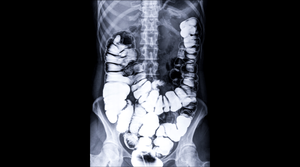Antimicrobial Copper Reduces 58% of HAIs, Study Finds
April 9, 2013
Antimicrobial copper surfaces can reduce the number of hospital-acquired infections (HAIs) by 58% as compared with touch surfaces that do not use copper, according to a new study. The study also found that antimicrobial copper can continuously kill 83% of bacteria that cause HAIs within two hours, including antibiotic-resistant strains.
Funded by the U.S. Department of Defense, the study was conducted in the ICUs at the Medical University of South Carolina, Memorial Sloan-Kettering Cancer Center in New York City, and the Ralph H. Johnson Veterans Affairs Medical Center in Charleston, SC. To determine the impact of copper alloy surfaces on the rate of HAIs, copper-surfaced objects were placed in each ICU, where patients are at higher risk of infection, undergo invasive procedures, and interact frequently with healthcare personnel. After patients were randomly placed in available rooms with or without copper alloy surfaces, the rates of HAIs were compared.
A total of 650 patients and 16 rooms were studied between July 2010 and June 2011. Eight of the rooms were equipped with copper surfaces while eight were not. In the course of the study, 46 patients developed an HAI, while 26 became colonized with methicillin-resistant Staphylococcus aureus or vancomycin-resistant enterococci. The proportion of patients that developed an HAI was significantly lower among those assigned to intensive care rooms with objects fabricated using copper alloys.
"The implications of this study are critical," remarks Harold Michels, senior VP of the Copper Development Association. "Until now, the only attempts to reduce HAIs have required hand hygiene, increased cleaning and patient screening, which don't necessarily stop the growth of these bacteria the way copper alloy surfaces do. We now know that copper is the game-changer: it has the potential to save lives."
"Copper alloy surfaces offer an alternative way to reduce the increasing number of HAIs, without having to worry about changing healthcare worker behavior," adds Michael Schmidt, vice chairman of microbiology and immunology at the Medical University of South Carolina and one of the authors of the study. "Because the antimicrobial effect is a continuous property of copper, the regrowth of deadly bacteria is significantly less on these surfaces, making a safer environment for hospital patients."
About the Author(s)
You May Also Like


